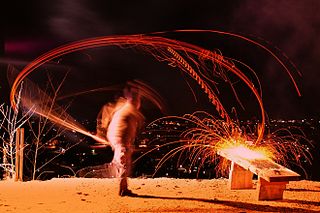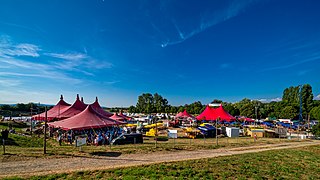 W
WThe flag of Baden displayed a combination of yellow and red, the heraldic colours of the former German state of Baden.
 W
WThe "Biberacher Schützenfest" is a Volksfest and the traditional children and home town festival in Biberach an der Riß. It is held annually in July and was mentioned for the first time in an official protocol in 1668. Throughout a duration of 9 days, various large venues are held, mostly with historical background, but as well with modern music and dance. Furtherthermore, there is a strong focus on entertainment for and involvement of children and pupils. At the fair, visitors can enjoy various rides, (local) food stalls, a beer tent and various historical beergardens ("Bierkeller") with live music. Before, during and a short time after the festival, children and teenagers perform the "Schützentheater" with yearly changing, e.g. fary tales from the Brothers Grimm.
 W
WThe Black Forest Costume Museum is a museum in the convent building of the former Capuchin abbey in Haslach im Kinzigtal in the Baden-Württemberg county of Ortenaukreis in south Germany.
 W
WThe Black Forest Open Air Museum is an open-air museum located between Hausach and Gutach in the Black Forest (Germany).
 W
WThe coat of arms of Baden comes from the personal arms of the Margraves and Grand Dukes of Baden, the traditional rulers of the region. Following the revolution and abolition of the Grand Duchy in 1918, the arms and griffin supporters were usurped from the Grand Dukes by the new republic to represent the people and country.
 W
WThe coat of arms of the German state of Baden-Württemberg features a greater and a lesser version.
 W
WThe coat of arms of the Kingdom of Württemberg shows an impalement of the three black antlers that represent Württemberg on the dexter side, and the three black lions passant of medieval Swabia on the sinister side, both on a gold field.
 W
WA cuckoo clock is, typically, a pendulum clock that strikes the hours with a sound like a common cuckoo call and has an automated cuckoo bird that moves with each note. Some move their wings and open and close their beaks while leaning forwards, whereas others have only the bird's body leaning forward. The mechanism to produce the cuckoo call has been in use since the middle of the 1700s and has remained almost without variation.
 W
WThe Deutsch-Amerikanisches Institut Tübingen is a cultural institution, formerly known as the Amerika-Haus.
 W
WThe flag of Baden-Württemberg has three variants. The civil flag (Landesflagge) has one design, while the state flag (Landesdienstflagge), has two designs. All three flags are a black over gold bi-color, while the state flag has one of two variants of the state arms centered on the flag.
 W
WThe German Clock Museum is situated near the centre of the Black Forest town of Furtwangen im Schwarzwald (Germany), a historical centre of clockmaking. It features permanent and temporary exhibits on the history of timekeeping. The museum is part of the local technical college.
 W
WHeart of Stone is a fairy tale written by Wilhelm Hauff. It was published in 1827 in a collection of fairy tales that take place within the narrative of The Spessart Inn. It formed the basis for the East German film Heart of Stone, from 1950 and other movie releases.
 W
WMannheim-Heidelberg International Filmfestival, often shortened to IFFMH, is an annual film festival held jointly by the cities of Mannheim and Heidelberg in Baden-Württemberg. The festival was established in 1952.
 W
WOrder of Merit of Baden-Württemberg is the highest award of the German State of Baden-Württemberg. Established 26 November 1974, it was originally called the Medal of Merit of Baden-Wuerttemberg. Effective 26 June 2009, the medal assumed its current name. The order is awarded by the Minister-President of Baden-Württemberg for outstanding contributions to the state of Baden-Wuerttemberg, in politics, society, culture and economics. The order is limited to 1,000 living holders, and has been awarded 1,923 times, as of 30 April 2018.
 W
WPi-Chacán is a sculpture by the Peruvian artist Fernando de la Jara that has stood in the grounds of the University of Tübingen's Institute for Microbiology and Virology since 2001. Weighing 32 tons and measuring 4.2 × 1.7 × 1.7 metres (13.8 × 5.6 × 5.6 ft), the sculpture is made from red Verona marble and represents a woman's vulva. It cost €120,000 and was originally intended to have a pool of water at its base, but budgetary constraints prevented this element of the design from being constructed.
 W
WRutenfest is an annual town festival in Ravensburg, Upper Swabia, Germany. At the end of the school term, local pupils and adult citizens take part in many Rutenfest events including a parade watched by tens of thousands of spectators. Rutenfest is generally considered the high spot of Ravensburg's city life. Alumni of local schools flock back to their hometown, to meet family and friends at the events officially organized by the Rutenfest Commission, and at hundreds of private parties.
 W
WScheibenschlagen is a traditional event in Central Europe in which glowing wooden disks are flung from a long hazelnut stick off a mountain side into the valley below.
 W
WThe Swabian-Alemannic Fastnacht, Fasnacht or Fasnat/Faschnat, is the pre-Lenten carnival in Alemannic folklore in Switzerland, southern Germany, Alsace and Vorarlberg.
 W
WThe Zelt-Musik-Festival (ZMF) has taken place every June and July since 1983 in Freiburg im Breisgau, Germany. It lasts three weeks and counts up to 120,000 visitors each year. The program is very broad. There is music, art, theater, cabaret and sport in different tents and on open-air stages. According to the organizer it is the biggest and oldest music festival in Baden-Württemberg. Over the years, more than 600 regional and international artists offered a diverse program consisting of classic, jazz, rock, pop and world music, cabaret and children's program. Also, many newcomers have been promoted.